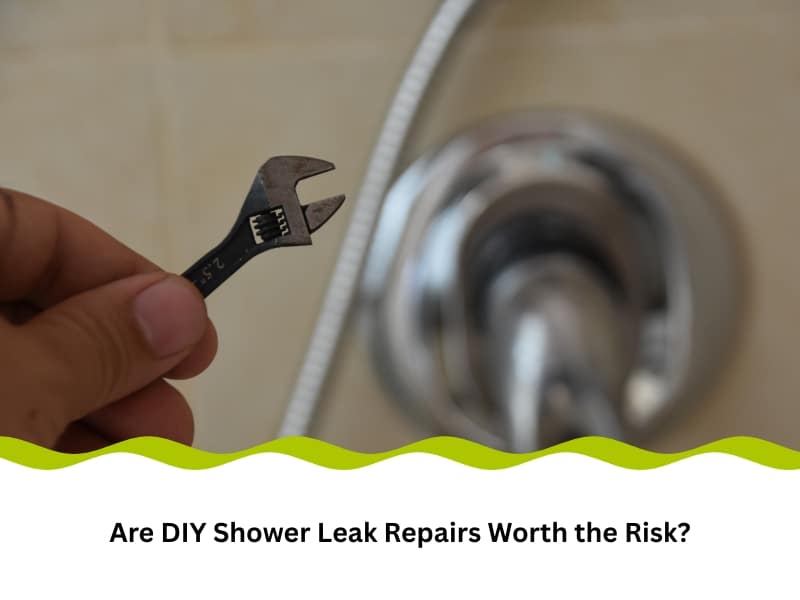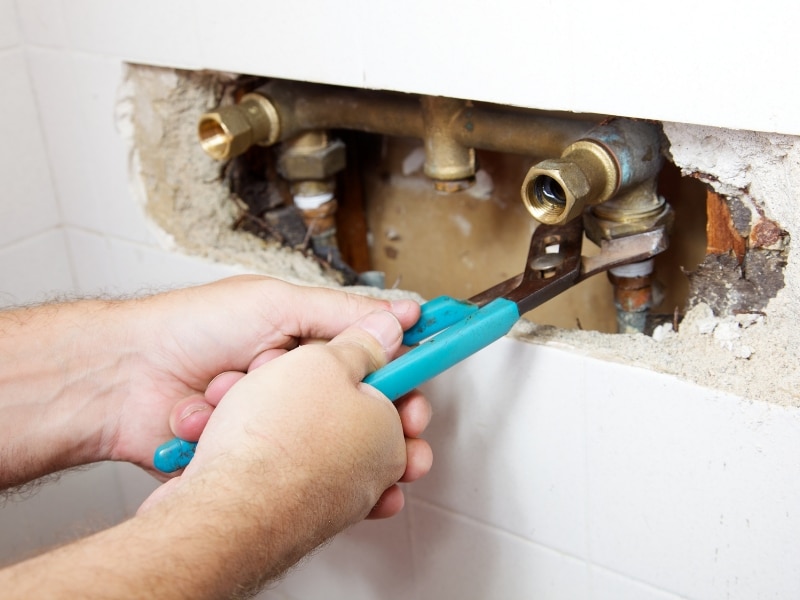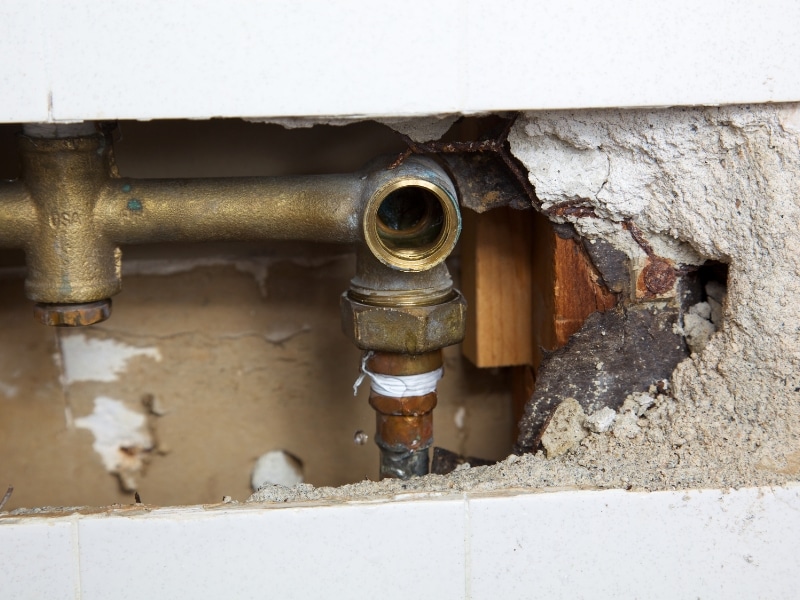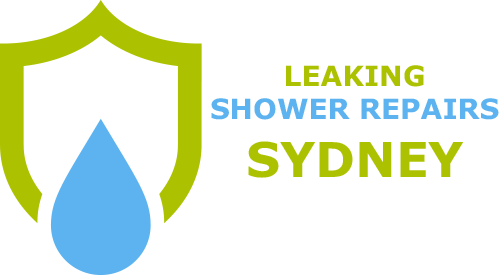Are DIY Shower Leak Repairs Worth the Risk?

A leaking shower can be frustrating, especially when it seems like a minor problem you can fix yourself. However, before you grab your tools and start Googling for DIY solutions, it’s essential to consider whether DIY shower leak repairs are genuinely worth the risk. In many cases, tackling the problem without professional expertise can lead to more complications than you bargained for. This article will explore the potential pitfalls of DIY shower leak repairs, why they often fail, and the risks associated with getting them wrong.
What could go wrong with DIY shower repairs?
When attempting DIY shower leak repairs, things can quickly spiral out of control. Here’s a look at some of the common issues:
- Improper sealing: Using the wrong sealants or applying them incorrectly can lead to leaks reappearing quickly.
- Water damage: A poorly repaired shower can cause water to seep into walls, floors, and structural elements, leading to long-term damage.
- Increased repair costs: Incorrect repairs may worsen the problem, requiring even more costly fixes later.
- Inadequate waterproofing: Proper waterproofing may not address the underlying problem, leaving your shower vulnerable to leaks in the future.
- Time and effort wasted: DIY repairs can take longer than expected, especially if you’re not experienced, leading to frustration and wasted time.
DIY shower leak repairs often become more trouble than they’re worth. From incomplete fixes to costly damage, it’s essential to understand what could go wrong before starting.
Why do DIY shower leak repairs often fail?
Despite the many online tutorials and step-by-step guides, DIY shower leak repairs often fall short of lasting results. Here are some reasons why:
| Issue | Cause | Impact |
| Lack of expertise | Inaccurate leak identification | Long-term issues |
| Subpar materials | Low-quality sealing products | Frequent leaks |
| No warranties | No professional guarantee | Future repairs |
| Inconsistent results | Improper application | Recurring leaks |
| Hidden damage | Unseen damage behind walls | Requires specialists |
The lack of professional knowledge, incorrect materials, and hidden damage all contribute to the failure of DIY shower leak repairs.
Can DIY fixes save you money or cost you more?
While DIY repairs may seem affordable, they can cost you more in the long run. Here’s why:
- Short-term savings vs. long-term costs: DIY repairs may appear cheaper initially, but you may pay more for additional fixes if the leak persists.
- Damage to other areas: An improperly fixed leak can cause water damage to surrounding areas, such as walls, flooring, or even the foundation, leading to expensive repairs.
- Hidden costs: Buying the wrong materials, tools, or sealants can add up quickly, making the total cost of DIY repairs higher than anticipated.
- Increased energy bills: A shower leak that isn’t correctly repaired can also lead to increased energy bills as water leaks into areas where it shouldn’t be.
DIY fixes might save you a few dollars upfront. Still, they can have more significant financial consequences if the issue isn’t addressed correctly.
Which DIY mistakes lead to long-term damage?
Common DIY mistakes when attempting shower leak repairs can have serious long-term effects. Some of the most common errors include:
- Neglecting to identify the root cause: Without adequately diagnosing the issue, you will likely fix only the symptoms, not the problem.
- Incorrect use of sealants: Applying the wrong type or too much sealant can trap moisture, worsening the problem.
- Ignoring underlying structural damage: Leaks may damage the structure beneath the tiles, such as timber or plaster, which needs to be fixed before retiling.
- Lack of proper waterproofing: DIY repairs often miss the essential steps, leaving your shower vulnerable to future leaks.
- Inconsistent repair techniques: Failure to follow precise procedures or cutting corners can lead to improper sealing, allowing leaks to recur.

While often small in the moment, these mistakes can lead to severe long-term damage if not addressed by a professional.
How do you know if your shower leak is serious?
Sometimes, a shower leak is a minor issue that can be fixed easily. However, some signs indicate it’s time to call in an expert. Here’s how to know when your leak is serious:
- Persistent dampness: If the leak doesn’t seem to stop despite your efforts to fix it, it could indicate a deeper problem.
- Visible damage: Cracked tiles, mould growth, or water stains on walls or ceilings are signs that the leak may have caused structural damage.
- Unpleasant odour: A musty or mouldy smell often accompanies water damage and indicates a serious leak.
- Pooling water: If you notice large pools around your shower, it’s a sign the leak is more severe than you might have realised.
- Increased water bills: A shower leak that isn’t fixed properly can spike water usage, leading to higher utility bills.
If any of these symptoms are present, your shower leak is likely serious and requires professional attention.
What are the risks of getting DIY repairs wrong?
Making a mistake during DIY shower leak repairs can have significant consequences. Here are the key risks associated with DIY errors:
- Water damage: Incorrectly sealed areas can lead to water damage behind walls or under floors, weakening the structure of your home.
- Mould and mildew: A leaking shower can create an environment for mould and mildew growth, potentially leading to health impacts of mould exposure and worsening the problem.
- Increased repair costs: Fixing the aftermath of a failed DIY repair can cost more than hiring a professional from the start.

- Structural damage: Continued water exposure from an unresolved leak can compromise the integrity of your bathroom or surrounding areas.
- Health risks: Water damage can lead to issues such as wood rot, which could be hazardous to your home’s health and safety.
The risks of DIY shower leak repairs going wrong can be far-reaching, from health hazards to costly damage.
How can you prevent future shower leaks?
To prevent future leaks and protect your bathroom, consider these steps:
- Ensure proper sealing: Always use the correct sealants and materials for repairs.
- Regular maintenance: Monitor your shower’s condition and address small issues before they become more significant problems.
- Upgrade waterproofing: Enhance your shower’s waterproofing by applying professional-grade products.
- Inspect plumbing: Regularly inspect your plumbing for leaks or signs of wear and tear.
- Call in the experts: When you’re uncertain about fixing a shower leak or the problem seems too complex, the most reliable course of action is to address shower leaks effectively with professional solutions by seeking assistance from a qualified service provider.
By taking these steps, you can reduce the likelihood of future leaks and protect your home from water damage.
Conclusion
While DIY shower leak repairs might seem like a quick fix, they often lead to more significant issues down the line. Whether it’s causing structural damage, worsening the leak, or incurring higher costs, attempting to repair a shower leak without the proper expertise is a risk you don’t need to take.Wondering how to fix that leaking shower? Speak to the team at Leaking Shower Repairs Sydney to discuss your needs.
